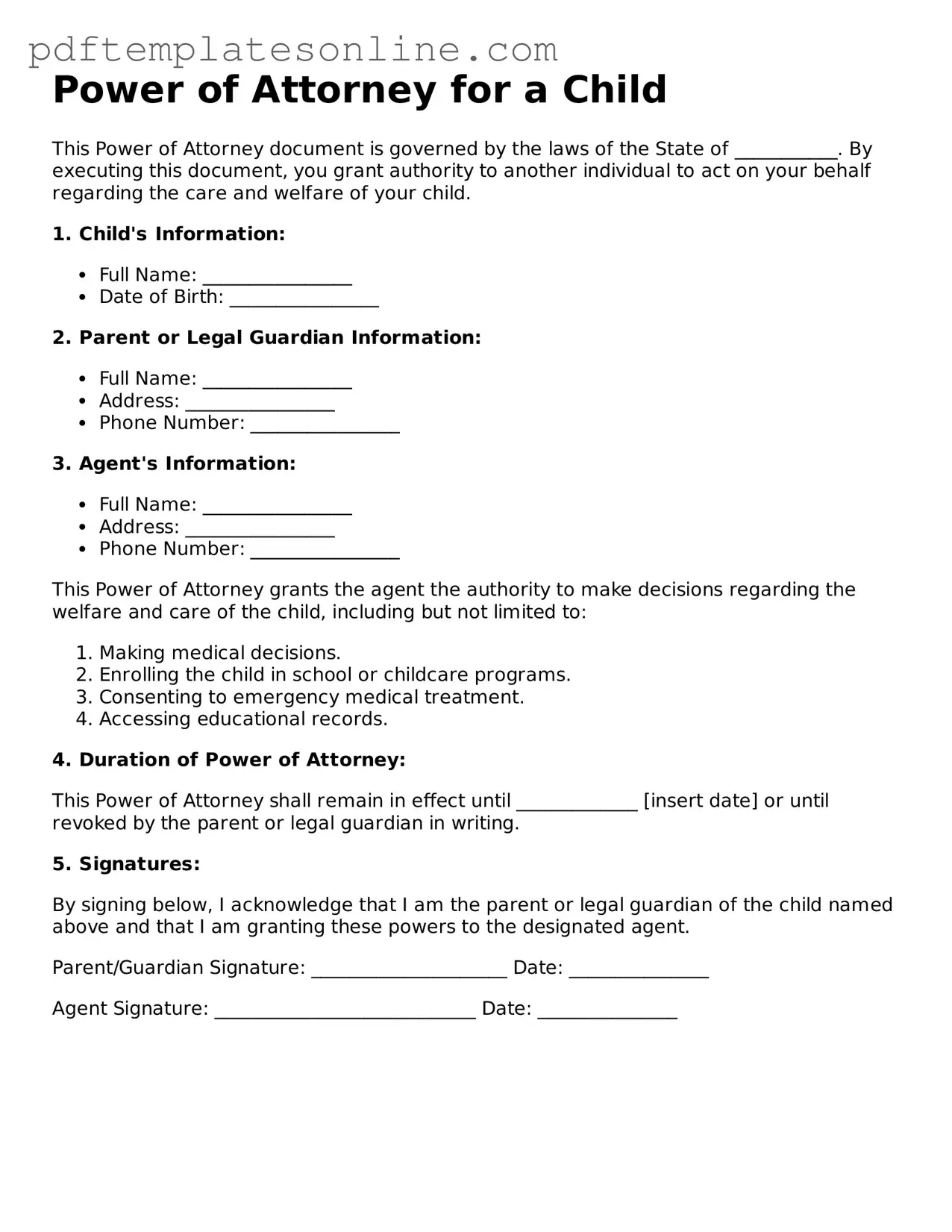Filling out a Power of Attorney for a Child form can be a straightforward process, but many people make common mistakes that can lead to complications later. One frequent error is failing to specify the duration of the power of attorney. Without a clear time frame, the authority granted may lead to confusion or misuse. It's essential to state whether the power is temporary or ongoing to avoid any misunderstandings.
Another mistake involves not identifying the child accurately. Parents or guardians sometimes overlook the importance of providing complete and correct information, such as the child’s full name and date of birth. This information is crucial, as it ensures that the power of attorney applies specifically to the intended child and not to someone else.
People also often neglect to include the necessary signatures. Both the parent or guardian granting the power and the designated agent must sign the form. Without these signatures, the document may be considered invalid. It’s a simple step, but one that can easily be overlooked during the process.
Additionally, some individuals fail to have the form notarized when required. Notarization adds an extra layer of legitimacy to the document, which can be vital in legal situations. Skipping this step can lead to challenges in enforcing the power of attorney later on.
Another common error is not understanding the scope of authority granted. People sometimes give broad powers without realizing the implications. It’s important to clearly outline what decisions the agent can make, whether it’s related to education, medical care, or other areas. This clarity helps prevent potential conflicts and ensures that the agent acts in the best interest of the child.
Finally, many forget to review the form before submission. A quick review can catch errors or omissions that could invalidate the document. Taking the time to double-check details ensures that everything is in order and can save a lot of trouble down the line.
